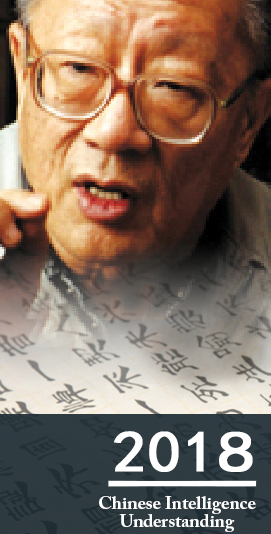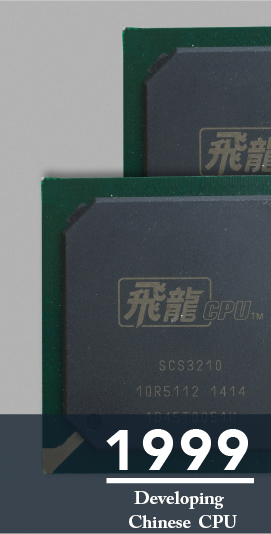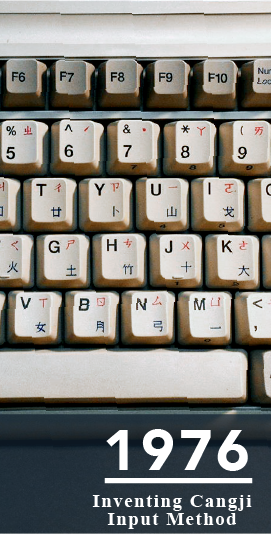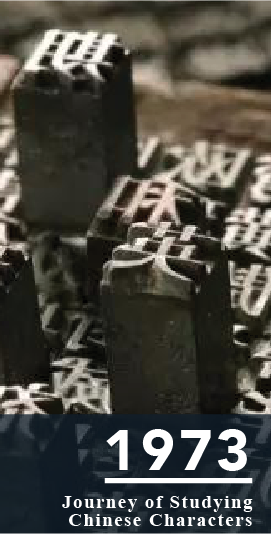2017
Although Chu Bong-Foo has been working on the most cutting-edge computer technology for over half his life, he has always been motivated to promote Chinese culture. At the age of eighty, he is still devoted to Chinese information technology even as it is a lonely and painstaking course under the dominance of Western technology. Despite all the praises and critics, Chu sticks to his revolutionary course. It might be too much to speak of reviving Chinese culture, but from his determined look we can see the courage of exploring the unknown, which drives the progress of human civilization.

2011

Chu Bong-Foo Culture Foundation Established
Chu Bong-Foo Culture Foundation was established in Macau in 2011, with the mission of translating the innovation and creativity inspired by Chu Bong-Foo and contributing to the society. It is a nonprofit organization serving social benefits. Its founding purposes include: preserving and reviving cultural heritage; helping vulnerable groups through education; and increasing social mobility. Since its inauguration, the foundation has donated to and supported orphanages, impoverished rural groups in the mainland, and new schools throughout China.
2002
Electronic Application into Rural Areas
The programs Chu undertook increased in size: The Chinese e-books program was initiated in September, 2002, and it has experimented in 10 secondary and primary schools in places such as Beijing and Guangzhou. Han Culture Database (漢文化資料庫) program strove to digitize classical texts from the Pre-Qin Period which dated back nearly 3,000 years. The Network Computer system aimed at providing 900 million farmers in the mainland with access to PDA, allowing them to get connected to the Internet simply by “speaking”, at only 1/10 of the cost required by the then current wireless products.

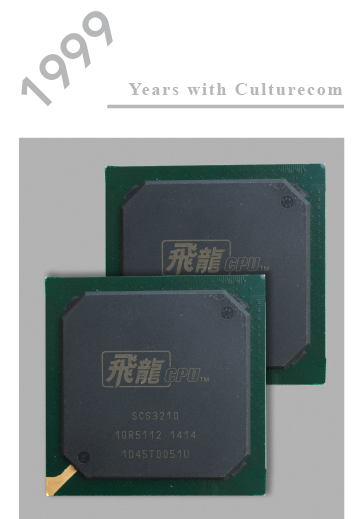
In 1999, Chu Bong-Foo became a vice chairman of Culturecom Corporation. Therefore, he moved to Macau and undertook programs on Chinese information technology, including: Cangjie e-books (Chinese electronic schoolbags) and Chinese CPU (Yixin (易芯) CPU series and V-Dragon CPU series). During his time with Culturecom, Chu developed Chinese character gene theory, on which he built a comprehension system able to analyze the Chinese language. He also developed a videotext system to apply the comprehension system.
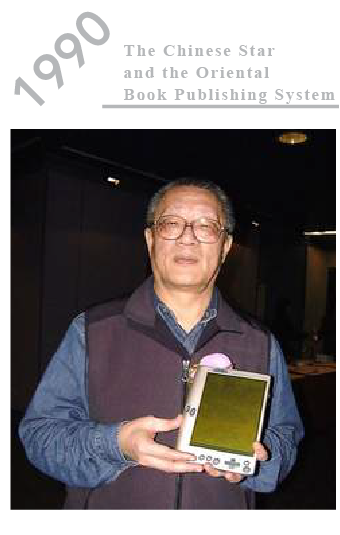
In 1983, Chu was forced to leave Taiwan for the US, where he worked for nearly five years and developed the Chinese Star system and the Oriental Book Publishing System. During his years in the US, he began to study Chinese natural language. In 1989, he cooperated with Shenzhen Science & Industry Park and complied a Complete Chinese Character Database. In 1990, Chu developed Juzhen Integrated System in the Chinese mainland, which was commended as world’s leading software technology by the Chinese Academy of Sciences.
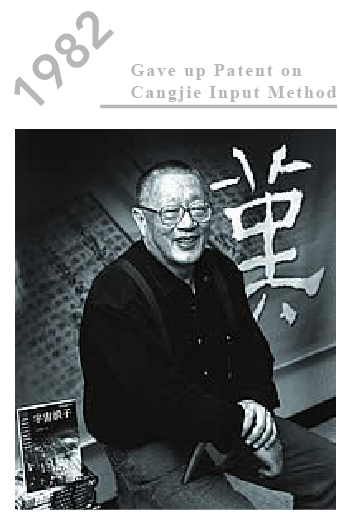
After inventing Cangjie Input Method, Chu continued to study programming languages. Later, he founded Zero One Company (零壹電腦公司), offering Chinese localization services to companies at competitive prices. To promote “Chinese computers”, Chu put an announcement in the newspaper giving up the patent on Cangjie Input Method and inviting his compatriots to research it. This made the input method popular in Chinese-speaking areas, such as Taiwan, Hong Kong, and Macau.

1980
Developing Tianlong Chinese Computer
In 1980, the businesses were not confident in the market for Chinese computers, thus reluctant to invest. That year, Chu cooperated with Mr. Stan Shih, founder of Acer, to launch Tianlong Chinese computer, the first Chinese computer with a Chinese operating system, Chinese programming language and Chinese software suites. This model shattered the belief that computers cannot be Chinese-based. The next year, Chu developed Chinese computer terminals, which sped up Chinese processing to an unprecedented level. Therefore, he was commended as the Father of Chinese Computers by Chinese in Taiwan and Hong Kong.
1976
Inventing Cangjie Input Method
After Chu returned to Taiwan and worked diligently for a few years, he had some savings to support his research on Chinese characters. At the end of 1976, he released an encoding method based on shape and semantics (形意檢字法) using 52 letters as keys to look up characters. His original intent was to improve the Chinese printing technique and develop a Chinese encoding method to enable typing in Chinese. Later, he received help from Ms. Shen Honglian from the Department of Chinese Literature at National Taiwan University, which led to great progress in his research. The encoding method based on shape and semantics was then named Cangjie by General Chiang Wei-kuo.

1973
Journey of Studying Chinese characters

In 1973, Chu Bong-Foo returned to Taiwan from Brazil and began his journey of studying Chinese characters, which lasted over four decades. Later, he put forward Chinese character gene theory. A proposition of the theory is that composition of Chinese characters contains epistemology of the ancient people, and thus the characters can be classified based on their corresponding concepts or common knowledge of them. From this perspective, Chu carried out in-depth research on subtle meanings of Chinese characters. His research can be applied to computer systems to enable the computers to process Chinese characters effectively. Based on this theory, Chu and his team created Cangjie system, which attracted much attention because of its special technique and superb functions.
Chu put forward six elements and functions of Chinese characters: shape, pronunciation, semantics, code, order and connotation. The first three are not new to Chinese characters, and the last three are developed and sorted out to enable processing in the information era. The process of analyzing Chinese characters and identifying their genes are referred to as “project of Chinese character genes”.
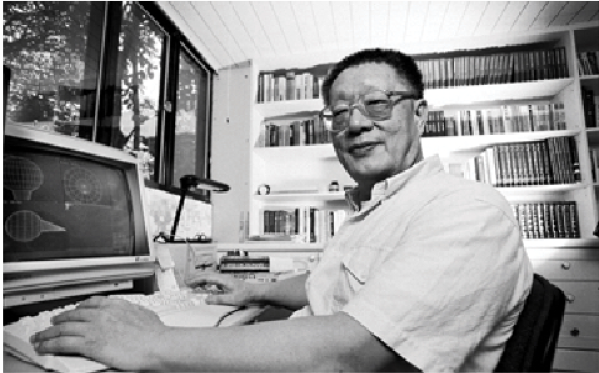
1972
Motivations for Researching Chinese Computers
In June, 1972, Chu worked in São Paulo at the largest publishing house in South America. The company published nearly a hundred types of publications every week. He had the experience of publishing a novel of 300,000 words in a single night. At that time, he started to think that Chinese education could catch up with the times only if knowledge could spread with such efficiency in China.
When working at the publishing house, he witnessed the process of publishing a book and was shocked: with lead typesetting, it took only twelve hours to type, proofread, finalize and print an English book, i.e., twelve hours for the manuscript to go from the publishing house to the market. Chu had worked in the publishing industry in Taiwan before and he was well aware that it took at least half a year to print a Chinese book. After in-depth research into the publishing process, Chu concluded that the bottleneck of Chinese lay in the encoding system of its characters.
1937
Chu Bong-Foo’s Birth


Chu Bong-Foo was born on October 12, 1937, in Huanggang of Hubei Province (now Yangluo Town, Xinzhou District, Wuhan City). He is a descendent of Zhu Xi, a Confucian scholar of Song Dynasty, and his ancestral place of residence is Anhui. His father, Huai-Bing, was an influential figure among the military and politicians. His mother, Wang Chan-Na (汪禪那), was born in Liyang, Jiangsu Province. In his early childhood, Chu Bong-Foo experienced war in the mainland, and after turbulent days eventually arrived in Taiwan when he was at the age for secondary school. He graduated from Taiwan Provincial Agriculture Institute (now Chung Hsing University), and lived in the US for a while before he returned to Taiwan when his father passed away. Later, he went to Brazil to find projects to invest in where he flirted with the hippie lifestyle and eventually worked at a local publishing house.
Contact us


